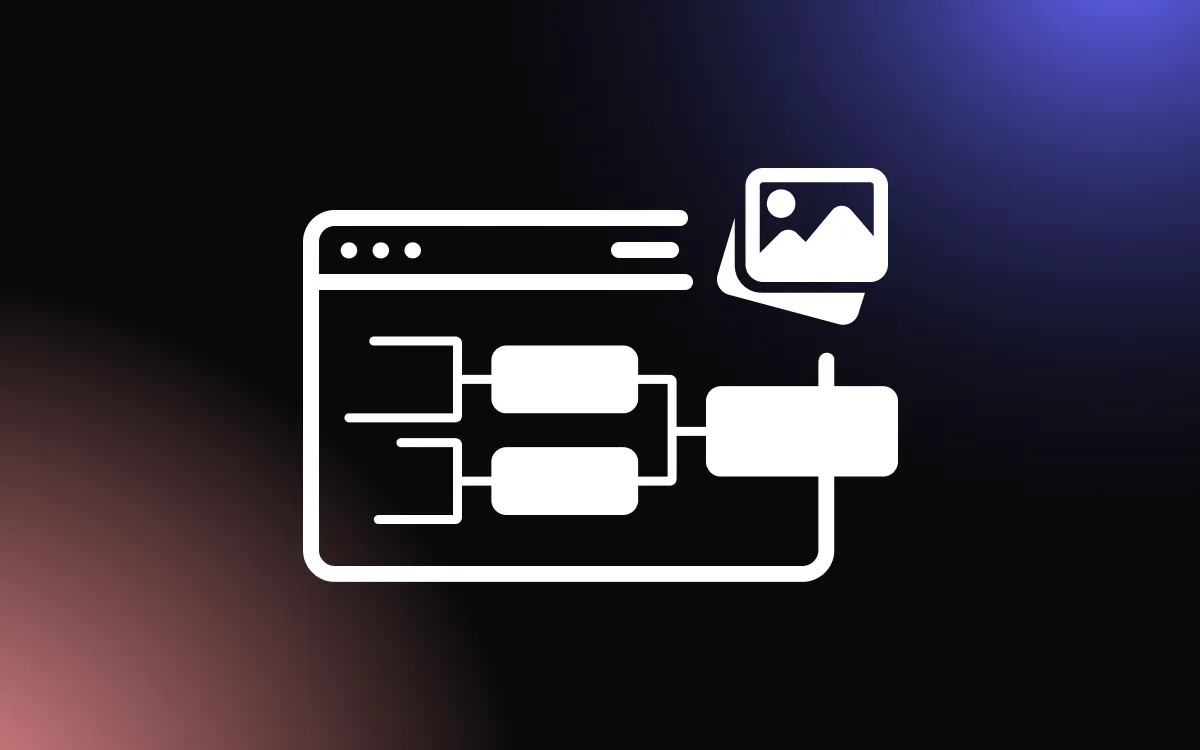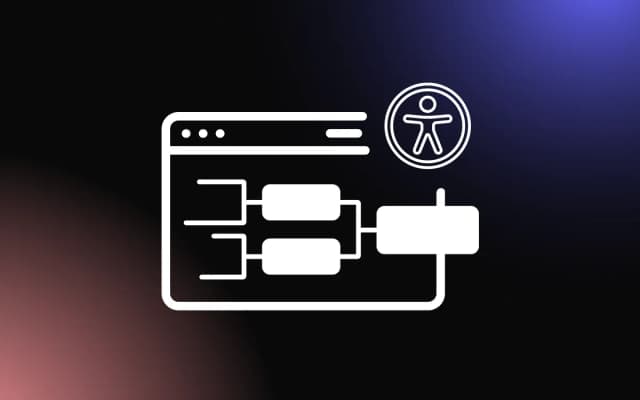
The world of competitive events and tournaments is filled with various formats, each offering a unique approach to determining a clear winner. Among these, the double-elimination bracket system stands out as a method that gives participants a fair and equitable chance to compete, providing an opportunity for a comeback even after a loss.
This comprehensive article will illuminate the inner workings, structure, and strategies related to the double-elimination bracket system, offering readers a thorough understanding that will empower them to successfully navigate and implement this format in various competitive contexts, as well as a powerful bracket-making tool to use for their bracket building needs.
Grasping the Double-Elimination Concept
Definition and Overview
Double-elimination tournaments are structured competitions where participants must lose two matches to be eliminated. After the first loss, competitors move to a lower "losers" bracket, where they have another opportunity to vie for the championship by competing against other teams that have also lost a match. This format provides participants with a chance to recover from a loss, making the competition more forgiving and offering a more extensive opportunity for participants to showcase their skills.
Contexts of Use: Various Competitions and Tournaments
Double-elimination brackets are widely utilized in various competitions and tournaments, including esports, board game tournaments, and sports events. The use of double-elimination brackets is particularly popular in contexts where organizers seek to provide competitors with a more balanced and equitable tournament experience.
This format ensures that participants have an extra opportunity to prove their abilities, even after experiencing a loss, making it a preferred choice for tournaments where resilience and recovery are valued.
Comparison with Single-Elimination Brackets
Compared to single-elimination brackets, double-elimination formats provide participants with a more extensive playing experience and an additional opportunity to compete for the championship. While single-elimination brackets are simpler and quicker to execute, they can be unforgiving, with competitors eliminated after a single loss.
In contrast, double-elimination brackets allow participants to lose a match and still have a chance to compete, offering a more inclusive and extended competition experience. This can enhance the enjoyment for participants and provide a more comprehensive assessment of teams' skills and capabilities throughout the tournament.
However, the trade-off includes a more complex organizational structure and a longer tournament duration, factors that organizers must consider when choosing the format for their event.
Structure of Double-Elimination Brackets
Layout and Seeding
The structure of a double-elimination bracket is more intricate compared to a single-elimination bracket. Initial seeding is crucial to ensure fairness and balance in the matchups. Similar to single-elimination, participants are seeded based on their rankings or other relevant criteria, but the path progresses through two different brackets – the upper (winners) and lower (losers) brackets.
Upper and Lower Brackets Explanation
In the upper bracket, matches proceed like a traditional single-elimination tournament. Losers in this bracket move to the lower bracket, where they have another chance to compete against other teams that have lost a match in the upper bracket. The winner of the lower bracket then faces the upper bracket champion for the title. In some cases, the lower bracket champion must beat the upper bracket champion twice, as the upper bracket champion has not lost a match, maintaining the principle that a team must lose twice to be eliminated.
Examples of Double-Elimination Bracket Structures
Let's take an example of an eight-team double-elimination tournament. Initially, all eight teams are placed in the upper bracket. After the first round, the four losing teams move to the lower bracket, while the four winning teams continue in the upper bracket.
In the second round of the upper bracket, the two losing teams are again moved to the lower bracket, joining the previous four. These matches continue in both brackets, culminating in a championship match between the winners of the upper and lower brackets.
Through careful organization and clear communication of the bracket structure and progression, double-elimination tournaments can provide an exciting, fair, and engaging competition experience, allowing participants multiple opportunities to prove their skills and compete for the championship.
Advantages of Double-Elimination Brackets
More Opportunities for Participants
One of the most significant advantages of double-elimination brackets is the additional opportunities provided to the participants. Unlike single-elimination tournaments where one loss results in immediate elimination, double-elimination allows participants to lose a game and still have a chance to rebound in the lower bracket.
This structure can be especially beneficial in mitigating the impact of a bad match or unexpected circumstances, giving teams the chance to recover and showcase their true skills and strategies.
Reduction of Chance Influence
Double-elimination brackets also work effectively to reduce the influence of chance or luck in determining the tournament’s outcome. Since teams must lose twice to be ousted, the double-elimination format ensures that a single unlucky match does not determine a competent team's entire fate in the tournament.
It provides a more accurate and comprehensive assessment of a team's ability by allowing them to compete in more than one game before potential elimination.
Enhanced Competition Excitement
The structure of double-elimination brackets can lead to enhanced excitement and engagement in the competition. With two separate brackets in play, spectators and fans have more matches to enjoy, and the path to the championship becomes more unpredictable and thrilling. The possibility of a team making a remarkable comeback from the lower bracket to win the championship adds a layer of drama and anticipation that can make the tournament more enjoyable for everyone involved.
Challenges and Considerations
Complexity in Organization and Understanding
One of the notable challenges of double-elimination brackets is the complexity involved in their organization and understanding. The presence of two distinct brackets – upper and lower – and the movement of teams between them based on match outcomes, can create confusion among participants and spectators alike.
Ensuring that everyone involved comprehends the structure and progression is essential for the smooth operation of the tournament. Clear communication, detailed explanations, and visual aids like well-designed bracket diagrams are crucial to mitigating this challenge.
Time and Resource Intensive
Double-elimination tournaments are inherently more time and resource-intensive compared to their single-elimination counterparts. The need to play more matches means extended tournament duration, requiring more venue booking, logistical management, and potential accommodation and travel arrangements.
Organizers need to be prepared for the additional time and resources needed to effectively manage the competition, ensuring that the benefits of the double-elimination format outweigh the increased demands.
Balancing and Seeding Concerns
Balancing and seeding in double-elimination brackets pose another set of considerations. Accurate and fair seeding is paramount to prevent early match-ups between top contenders, ensuring that all participants have a fair chance to progress in the competition. It's crucial to use a reliable and transparent method for seeding, and possibly consider implementing measures such as seeding adjustments for the lower bracket, to ensure that the competition remains balanced and equitable for all teams involved.
In essence, while the double-elimination format offers numerous benefits, these challenges and considerations should be thoroughly assessed and addressed by organizers to ensure the successful execution and enjoyment of the tournament for all participants and stakeholders.
Organizing a Double-Elimination Tournament
Necessary Tools and Software
Organizing a double-elimination tournament requires careful planning and the use of appropriate tools and software. Various online platforms offer customizable double-elimination bracket templates, which can automate much of the scheduling and progression tasks.
This automation is crucial in managing the more complex structure of double-elimination tournaments, helping ensure that the competition runs smoothly. Additionally, using software solutions can help in real-time updating and sharing of the bracket, keeping participants and spectators informed about the tournament's progression.
Ensuring Fair and Effective Bracket Design
Creating a fair and effective bracket design is paramount for the success of a double-elimination tournament. Initial seeding should be carried out meticulously to avoid early knockouts of strong contenders, ensuring a balanced competition throughout. One must consider the participants' skill levels, previous performance, and other relevant metrics to design a bracket that offers equitable matchups and opportunities for all teams.
Continuous monitoring and potential adjustments might be necessary to maintain fairness, especially when transitioning teams between the upper and lower brackets. The goal is to ensure every team has a fair shot at progressing through the tournament, without facing unfair disadvantages due to bracket structure or seeding.
Communication and Clarity in Structure Presentation
Effective communication is essential for a successful double-elimination tournament. Participants need to understand the bracket structure, progression rules, and scheduling to ensure they are prepared for their matches.
Providing clear, detailed information about the tournament structure, alongside visual aids like bracket diagrams, can help eliminate confusion and ensure all participants are on the same page. Regular updates and announcements regarding match outcomes, upcoming fixtures, and bracket progression help keep everyone informed and engaged in the competition.
The emphasis should be on transparency and clarity, ensuring all participants feel confident about the tournament’s organization and progression, fostering a positive and enjoyable competition environment for everyone involved.
Navigating Double-Elimination Competitions
Strategies for Participants
Navigating a double-elimination tournament successfully requires thoughtful strategies from participants. Preparation should include a thorough understanding of the tournament structure and potential paths through both the upper and lower brackets. Participants should be ready to adapt to diverse competitors and situations, keeping their focus intact whether in the upper bracket or making a comeback in the lower bracket.
Analyzing opponents’ strengths and weaknesses, creating robust game plans, and staying mentally resilient are critical elements for success in a double-elimination competition.
Managing the Upper and Lower Brackets
Understanding and managing the dynamics of both upper and lower brackets are vital for participants in double-elimination tournaments. In the upper bracket, teams should aim for consistent wins to avoid dropping into the lower bracket, where the path to the championship can be more arduous.
If in the lower bracket, teams must adopt a resilient mindset, understanding that they still have a shot at the title. They should harness the opportunity to learn from previous matches, refine their strategies, and work hard to climb back up, game by game.
Handling Wins and Losses Effectively
Handling wins and losses effectively is paramount in double-elimination tournaments. A win should reinforce confidence and focus, but not lead to complacency. Teams must continuously analyze their performance, seeking improvement even after victories.
Conversely, a loss should not dishearten teams. In the double-elimination format, a loss is not the end, but an opportunity to regroup, reassess, and come back stronger in the lower bracket. Effective management of emotions, staying positive, learning from each game, and maintaining a clear, strategic focus will help teams navigate the highs and lows of double-elimination competitions efficiently.
Beyond Double-Elimination: Other Tournament Formats
Round-Robin and Swiss Formats
Beyond double-elimination brackets, various other tournament formats can be employed based on the nature and scale of the competition. The Round-Robin format, for instance, allows every participant to face each other once, ensuring comprehensive competition and a thorough test of skills across the board.
This format is particularly beneficial for highlighting consistent performance over multiple games. Another popular format is the Swiss system, used extensively in chess tournaments, where each contestant competes in each round against opponents with a similar running score, but not against the same opponent more than once.
Multi-Stage Tournaments
Multi-Stage tournaments offer another alternative, combining different formats for a diverse and engaging competition experience. A tournament might start with a Round-Robin or Swiss stage, followed by a single or double-elimination playoff bracket.
This combination allows for both extensive competition in the initial stages and high-stakes, focused competition in the concluding phases, offering a balanced and exciting tournament structure.
Weighing the Pros and Cons
Choosing the right tournament format requires careful consideration of various factors, including the number of participants, the available time and resources, and the competition’s objectives. While Round-Robin ensures everyone plays against each other, it may be time-consuming for events with a large number of participants. Swiss formats offer a balanced competition, adapting to the participants’ performance, but might be complex to organize.
Double-elimination and multi-stage tournaments offer multiple opportunities and varied competition experiences but entail detailed planning and management. Weighing the pros and cons, organizers should opt for a format that aligns with the competition’s goals, ensuring an enjoyable, fair, and successful tournament for all involved.
Conclusion
In conclusion, the double-elimination bracket system is a robust and fair tournament structure that ensures participants have every opportunity to showcase their skills and strategies, even after facing a defeat.
Through a detailed exploration in this article, readers have been guided through the essential elements, from its organization and rules to the benefits it offers. Armed with this knowledge, individuals can now approach double-elimination tournaments with confidence and clarity, ensuring enjoyable and equitable competition for all involved parties.


